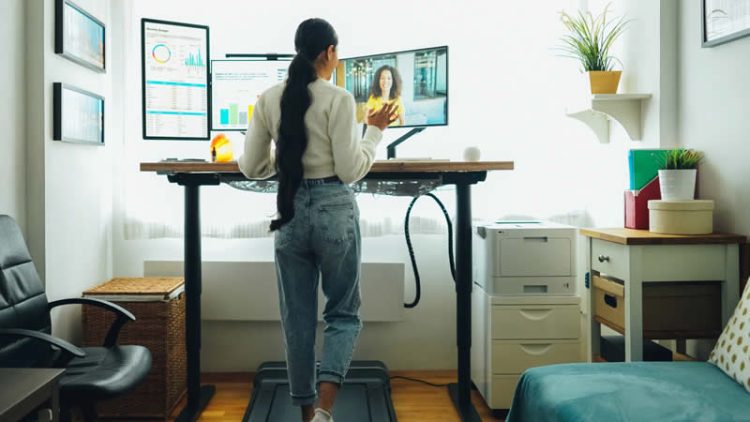Introduction
When we think about the factors that influence our lifestyle—our habits, routines, and overall health—we often focus on personal choices, discipline, or motivation. While these are important, there’s an often-overlooked force that may have a greater impact than we realize: our environment.
From the physical layout of our homes and neighborhoods to the cultural norms of our workplaces and communities, the environment we live in quietly but powerfully shapes our behavior. This shaping doesn’t happen with loud commands or obvious instructions—it happens subtly, through accessibility, exposure, and influence.
This article explores how your surroundings affect the way you eat, move, sleep, connect with others, and manage stress. By becoming aware of these influences, you can begin to design or modify your environment to support healthier, more intentional living.
The Science of Environmental Influence
Behavioral psychology and habit science have long emphasized that context matters. According to researchers like Dr. BJ Fogg and James Clear, environment is one of the most powerful cues for habit formation.
We are not just creatures of habit—we are creatures of context. This means that:
- We tend to act in ways that align with what is easiest and most visible.
- We mirror the behaviors of people around us.
- We follow environmental cues without conscious awareness.
This influence happens everywhere—from your kitchen and bedroom to your office and local community.
1. Your Physical Environment Shapes Your Choices
Home Layout and Design
The way your living space is organized can promote or hinder healthy behavior:
- A cluttered kitchen may lead to more processed food choices.
- A visible fruit bowl encourages snacking on fresh produce.
- Leaving workout clothes or a yoga mat in sight can prompt more frequent exercise.
Even the lighting, temperature, and noise levels in your home can influence your:
- Sleep quality
- Concentration and productivity
- Mood and motivation
Neighborhood and Urban Design
Where you live influences how active or sedentary your life becomes:
- Walkable neighborhoods encourage daily movement.
- Access to parks and green spaces reduces stress and improves cardiovascular health.
- Areas with many fast-food chains but few grocery stores can push people toward unhealthy eating habits.
Research shows that people in “activity-friendly environments” are more likely to meet recommended physical activity levels.
2. Your Social Environment Influences Your Habits
The people around you shape your behavior through social norms, expectations, and imitation.
Family and Household
- Eating patterns are often adopted from parents, partners, or roommates.
- Sleep and screen time routines often align within a household.
- Emotional climate (supportive vs. tense) affects stress management and mental health.
Workplace Culture
- Office norms about breaks, food, and hours strongly influence daily health routines.
- If no one else takes lunch away from their desk, you’re less likely to either.
- Burnout can be normalized in high-stress cultures, encouraging chronic overwork.
Peer Groups and Community
- You’re more likely to exercise, eat healthy, or stop smoking if your friends do.
- Positive peer pressure can help build sustainable habits—but negative influences (e.g. excessive drinking, sedentary behavior) can do the opposite.
We tend to become like the people we spend the most time with—a powerful reason to choose our social circles intentionally.
3. Your Digital Environment Matters Too
In the modern world, your environment isn’t just physical—it’s also digital. The content you consume and the notifications you receive constantly shape your thoughts and habits.
Social Media and Content Consumption
- Repeated exposure to idealized body images or diet trends can cause stress or distorted eating habits.
- Following wellness-minded influencers or communities can inspire positive lifestyle changes.
- Digital overload contributes to sleep disturbances, reduced focus, and anxiety.
Curating your digital space—unfollowing toxic accounts, limiting screen time, and engaging with positive, evidence-based content—can lead to more mindful and balanced living.
4. Subtle Cues That Influence Behavior Without You Noticing
Environment influences behavior in ways that often go unnoticed. Examples include:
- A bowl of candy on the counter → more mindless snacking
- A standing desk → more movement and better posture
- No clear bedtime routine → inconsistent sleep
- Music and scent in stores → altered mood and impulse buying
Behavioral designers call these “nudges”—small environmental elements that gently guide decisions without forcing them. Recognizing these cues helps you become more aware—and empowered.

5. How to Reshape Your Environment for Better Living
If your current environment isn’t aligned with the habits you want to build, the good news is: you can redesign it.
At Home:
- Keep healthy foods visible and accessible
- Create a calming bedtime routine space (low light, no screens, cool temperature)
- Designate a workout or meditation corner
- Place cues in strategic locations (notes, reminders, tools)
At Work:
- Use time-blocking to protect breaks and focus
- Advocate for walking meetings or movement-friendly policies
- Keep water and healthy snacks nearby
- Set screen boundaries to reduce burnout
In Your Community:
- Explore and use local parks or trails
- Support farmer’s markets or wellness events
- Engage in community fitness or art groups
- Advocate for safe, active urban design
Digitally:
- Declutter your phone from stress-inducing apps
- Use blue-light filters or “focus” modes
- Follow accounts that uplift, educate, or motivate
- Track behavior patterns to stay aware of time spent
Conclusion
Your environment is not neutral—it is always guiding, nudging, and shaping your behavior, whether you notice it or not. The more aligned your surroundings are with your health goals, the less willpower you need to stay on track.
Instead of relying solely on motivation, consider this:
“Design your space to support the life you want to live.”
By becoming more intentional with your environment—physical, social, and digital—you create a lifestyle that feels easier, more joyful, and more aligned with your values.
Change doesn’t always require massive effort. Sometimes, it just requires a smarter setup.

















































